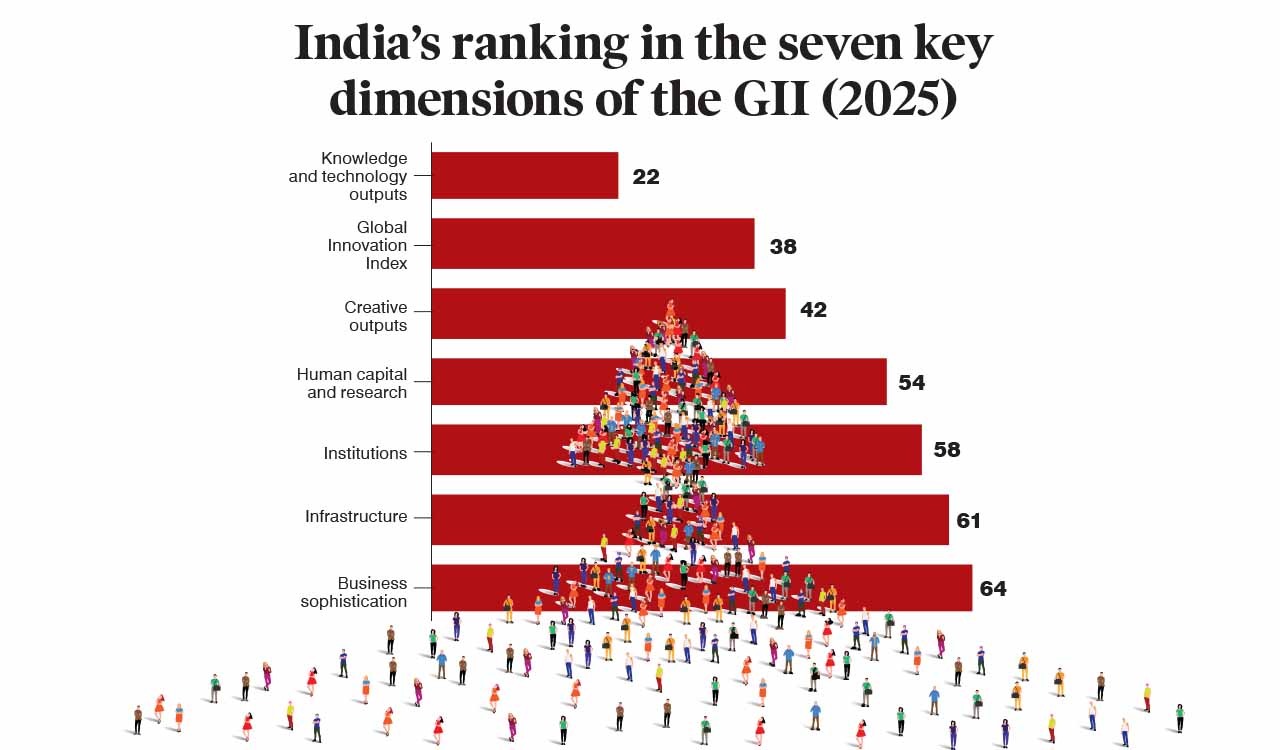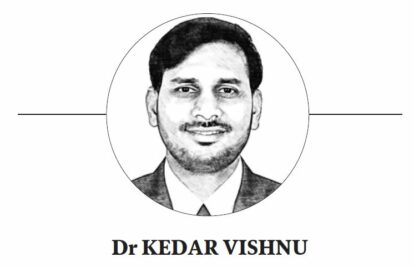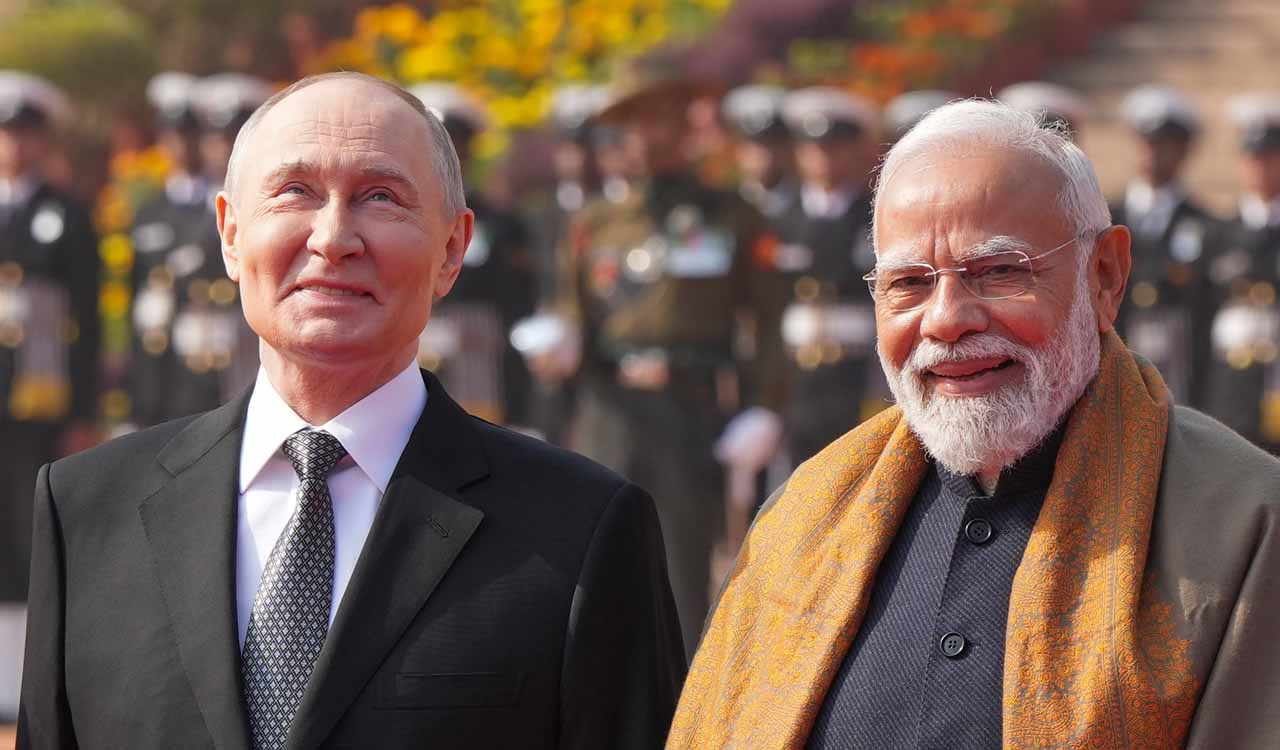Opinion: Nobel lessons for Viksit Bharat: How innovation can drive India’s growth
Progress isn’t assured; the Nobel laureates Joel Mokyr, Philippe Aghion, and Peter Howitt stress the need to protect innovation and openness

By Dr Kedar Vishnu
Three economists — Joel Mokyr, Philippe Aghion, and Peter Howitt — were awarded the 2025 Nobel Prize in Economics for their groundbreaking research on innovation-driven economic growth. Their work sheds light on how innovation and technological advancements have supported sustainable development and poverty reduction since the 19th century. The laureates demonstrated how innovation contributed to rising per capita incomes in countries such as Sweden and the United Kingdom, explaining why Sweden, in particular, experienced a significant increase in income and a notable reduction in poverty compared to other nations.
Also Read
Their research is especially relevant today as countries, including India, seek to harness innovation to drive economic growth, reduce inequality, and achieve sustainable development in an increasingly uncertain global environment.
Prof Joel Mokyr’s pioneering work explains the prerequisites for long-term, sustainable economic expansion driven by technological advancement. His research demonstrates how scientific innovations give rise to new technologies, which in turn stimulate further research, initiating a continuous cycle of innovation that sustains economic growth. His work also shows that sustainable growth happens in societies that are open to accepting and encouraging innovation.
Mokyr further demonstrates how systematic thinking evolved during the Scientific Revolution of the 16th and 17th centuries, shifting from focusing on “how” to investigating “why”. The significant discoveries resulting from this intellectual revolution encouraged creativity and inventiveness.
Professors Philippe Aghion and Peter Howitt were awarded the other half of the prize for their groundbreaking research in developing a mathematical model for the concepts of “creative destruction”. They have extended the concept of creative destruction, first introduced by Prof Joseph Schumpeter, explaining how disruptions resulting from creative destruction can be managed constructively. Prof Aghion’s research has helped many governments promote greater innovation while fostering healthy competition.
Earlier, Nobel laureate Prof Amartya Sen emphasised the importance of sustainable development. The work of Mokyr, Aghion, and Howitt helps us understand how innovation drives sustainable long-term economic growth. Their research also reminds us that real progress means an improved quality of life, which includes advances in medicine, safer transportation, cleaner energy, better food, and faster communication.
Innovation as Driver of Growth
The three laureates demonstrated that the per capita income of many countries has increased significantly due to innovation, particularly during the 19th century. While plotting the Global Innovation Index (GII) and per capita income together for more than 100 countries for the year 2025, we find a strong association between GII scores and per capita income. Countries that scored higher on innovation reported higher per capita incomes. Their work underscores that innovative capabilities drive overall economic growth and revenue generation.
It is also crucial to promote laboratory-based research while ensuring that scientific findings are effectively translated and applied in the field — a process that remains slow in India
According to the Global Innovation Index 2025, Sweden is ranked second globally, while India is ranked 38th out of 139 economies. Sweden invested 3.6 per cent of its GDP in research and development in 2024–25, compared with India’s just 0.64 per cent. Innovation and a focus on technology are key factors in the long-term economic prosperity of developed nations. The laureates’ research holds a strong relevance for India; therefore, it is essential to understand in which GII subsectors India has improved and where further progress is needed.
India’s 22nd-place ranking globally for knowledge and technology outputs reflects both its exceptional capacity for innovation and its increasing competitiveness in the global market. India’s GII ranking has improved from 48 in 2020 to 38 in 2025, strengthening its creative capacity and economic progress.
However, India ranks 42nd in creative outputs and 54th in research and human capital, posing challenges to fully leveraging its demographic dividend. The country ranks lower in infrastructure (61st), institutions (58th), and business sophistication (64th), highlighting critical areas that require targeted government interventions to enhance overall competitiveness, productivity, and innovation capacity. Sustained Innovation and progress in business sophistication demand strategic investments in R&D, infrastructure, human resources, and institutional reforms.
Driving Innovation-Led Growth
The progress made by India in digital technology, medicine, and renewable energy shows how the exchange of critical knowledge can boost productivity. New Delhi, Chennai, Mumbai, and Bengaluru continue to lead innovation clustering, raising concerns about regional imbalances that may hinder balanced national growth, as highlighted in the 2025 GII. Greater focus is needed on research and innovation in the rural sector to ensure inclusive growth. It is also crucial to promote laboratory-based research while ensuring that scientific findings are effectively translated and applied in the field — a process that remains slow in India.
Rising trade restrictions and geopolitical uncertainties pose challenges to innovation. To achieve sustainable growth, India must promote innovation, strengthen research and development, and invest in research focused on the rural economy. Sustainable development requires balancing innovation and competition by reducing market barriers, supporting displaced workers, enhancing government efficiency, and encouraging risk-taking. Long-term growth will depend on building a dynamic, inventive economy with flexible institutions that can adapt to new ideas. By fostering a culture of innovation across sectors and regions, India can unlock its full economic potential and achieve inclusive, long-term prosperity.
The insights of these Nobel laureates remind us that economic progress is not guaranteed. Countries must actively foster innovation, curb market dominance, and strengthen the global environment for research and development. Safeguarding innovation and openness is critical for long-term success. Although India still needs to improve in several sectors related to innovation, its recent rise in global rankings demonstrates strong potential to realise the vision of a Viksit Bharat by 2047.

(The author is Associate Professor of Economics at Manipal Academy of Higher Education, Bengaluru)
Related News
-
Four killed as dense fog triggers 10-vehicle pile-up on Delhi-Agra Expressway
7 mins ago -
Modi salutes armed forces on Vijay Diwas
11 mins ago -
Bondi Beach mass shooting inspired by Islamic State, say Australian police
15 mins ago -
India to Pakistan at UN: Will counter terrorism ‘with all its might’
21 mins ago -
Two CoBRA commandos injured in IED blast during anti-Naxal operation in Chhattisgarh
29 mins ago -
J&K encounter: Cop killed, terrorist injured in Udhampur gunfight
41 mins ago -
Trump sues BBC for $10 billion over alleged defamation
56 mins ago -
Six killed in small plane crash in central Mexico
1 hour ago




